Distribution of cephalic electroreceptor organs in weakly electric South American knifefishes (Teleostei: Ostariophysi: Gymnotiformes)
Received 2 February 2024
Revised 13 March 2024
Accepted 3 May 2024
Published 29 May 2024
ZooBank LSID:
urn:lsid:zoobank.org:pub:E6F85B45-3B77-4CBF-95A1-7360E3C184E8
German National Library URN:
urn:nbn:de:101:1-2405291400327.334577292229
DOI:
10.23788/IEF-1199
Aguilera, P. A., M. E. Castello & A. A. Caputi. 2001. Electroreception in Gymnotus carapo: differences between self-generated and conspecific-generated signal carriers. Journal of Experimental Biology, 204: 185-198.
Albert, J. S. & W. G. R. Crampton. 2003. Seven new species of the Neotropical electric fish Gymnotus (Teleostei, Gymnotiformes) with a redescription of G. carapo (Linnaeus). Zootaxa, 287: 1-54.
Albert, J. S. & W. G. R. Crampton. 2005a. Electroreception and electrogenesis. Pp. 431-472 in: D. Evans (ed.), The physiology of fishes (3rd ed.). C.R.C. Press, New York.
Albert, J. S. & W. G. R. Crampton. 2005b. Diversity and phylogeny of neotropical electric fishes (Gymnotiformes). Pp. 360-409 in: T. H. Bullock, C. D. Hopkins, A. N. Popper & R. R. Fay (eds.), Electroreception. Springer Handbook of Auditory Research. Springer, New York.
Albert, J. S. & W. G. R. Crampton. 2009. A new species of electric knifefish, genus Compsaraia (Gymnotiformes: Apteronotidae) from the Amazon River, with extreme sexual dimorphism in snout and jaw length. Systematics and Biodiversity, 7: 81-92.
Alda, F., V. A. Tagliacollo, M. J. Bernt, B. T. Waltz, W. B. Ludt, B. C. Faircloth, M. E. Alfaro, J. S. Albert & P. Chakrabarty. 2019. resolving deep nodes in an ancient radiation of Neotropical fishes in the presence of conflicting signals from incomplete lineage sorting. Systematic Biology, 68: 573-593.
Amen, R., R. Nagel, M. Hedt, F. Kirschbaum & R. Tiedemann. 2020. Morphological differentiation in African weakly electric fish (genus Campylomormyrus) relates to substrate preferences. Evolutionary Ecology, 34: 427-437.
Andres, K.H., M. von Düring & E. Petrasch. 1988. The fine structure of ampullary and tuberous electroreceptors in the South American blind catfish Pseudocetopsis spec. Anatomy and Embryology, 177: 523-535.
Arnegard, M. E., P. B. McIntyre, L. J. Harmon, M. L. Zelditch, W. G. R. Crampton, J. K. Davis, J. P. Sullivan, S. Lavoué & C. D. Hopkins. 2010. Sexual signal evolution outpaces ecological divergence during electric fish species radiation. The American Naturalist, 176: 335-356.
Bastian, J. 1977. Variations in the frequency response of electroreceptors dependent on receptor location in weakly electric fish (Gymnotoidei) with a pulse discharge. Journal of Comparative Physiology, 121: 53-64.
Bennett, M. V. L. 1967. Mechanisms of electroreception. Pp. 313-393 in: P. H. Cahn (ed.), Lateral line detectors. Indiana University Press, Bloomington.
Bennett, M. V. L. 1970. Comparative physiology: electric organs. Annual Reviews in Physiology, 32: 471-528.
Bennett, M. V. L. 1971. Electric organs. Pp. 347-491 in: W. S. Hoar & D. J. Randall (eds.), Fish Physiology. Volume 5. Academic Press, New York and London.
Bodznick, D. & J. C. Montgomery. 2005. The physiology of low-frequency electrosensory systems. Pp. 132-153 in: T. H. Bullock, C. D. Hopkins, A. N. Popper & R. R. Fay (eds.), Electroreception. Springer Handbook of Auditory Research. Springer, New York.
Boord, R. L. & C. B. G. Campbell. 1977. Structural and functional organization of the lateral line system of sharks. American Zoologist, 17: 431-441.
Brenowitz, E. A. 1986. Environmental influences on acoustic and electric animal communication. Brain, Behavior and Evolution, 28: 32-42.
Bullock, T. H., C. D. Hopkins, A. N. Popper & R. R. Fay. 2006. Electroreception. Springer, New York.
Caputi, A. A. 1999. The electric organ discharge of pulse gymnotiforms: the transformation of a simple impulse into a complex spatio-temporal electromotor pattern. Journal of Experimental Biology, 202: 1229-1241.
Carlson, B. A., S. M. Hasan, M. Hollmann, D. B. Miller, L. J. Harmon & M. E. Arnegard. 2011. Brain evolution triggers increased diversification of electric fishes. Science, 332: 583-586.
Carr, C. E., L. Maler & E. Sas. 1982. Peripheral organization and central projections of the electrosensory nerves in gymnotiform fish. Journal of Comparative Neurology, 211: 139-153.
Carvalho, T. P. & J. S. Albert. 2015. A new species of Rhamphichthys (Gymnotiformes: Rhamphichthyidae) from the Amazon basin. Copeia, 103: 34-41.
Castelló, M. E., P. A. Aguilera, O. Trujillo-Cenóz & A. Caputi. 2000. Electroreception in Gymnotus carapo: pre-receptor processing and the distribution of electroreceptor types. Journal of Experimental Biology, 203: 3279-3287.
Coombs, S., J. Janssen & J. F. Webb. 1988. Diversity of lateral line systems: evolutionary and functional considerations. Pp. 553-593 in: J. Atema, R. R. Fay, A. N. Popper, W. N. Tavolga (eds.), Sensory biology of aquatic animals. Springer, New York.
Correa, S. B., W. G. R. Crampton & J. S. Albert. 2006. Three new species of the Neotropical electric fish Rhabdolichops (Gymnotiformes: Sternopygidae) from the Central Amazon, with a new diagnosis of the genus. Copeia, 2006: 27-42.
Cox Fernandes, C., J. G. Lundberg & C. Riginos. 2002. Largest of all electric-fish snouts: hypermorphic facial growth in male Apteronotus hasemani and the identity of Apteronotus anas (Gymnotiformes: Apteronotidae). Copeia, 2002: 52-61.
Crampton, W. G. R. 1998. Electric signal design and habitat preferences in a species rich assemblage of gymnotiform fishes from the upper Amazon basin. Anais da Academia Brasileira de Ciências, 70: 805-848.
Crampton, W. G. R. 2011. An ecological perspective on diversity and distributions. Pp. 165-189 in: J. S. Albert & R. Reis (eds.), Historical biogeography of Neotropical freshwater fishes. University of California Press, Berkeley.
Crampton, W. G. R., D. H. Thorsen & J. S. Albert. 2004. Steatogenys ocellatus: a new species of Neotropical electric fish (Gymnotiformes: Hypopomidae) from the lowland Amazon Basin. Copeia, 2004: 78-91.
Crampton, W. G. R., D. H. Thorsen & J. S. Albert. 2005. Three new species from a diverse, sympatric assemblage of the electric fish Gymnotus (Gymnotiformes: Gymnotidae) in the lowland Amazon Basin, with notes on ecology. Copeia, 2005: 82-99.
Crampton, W. G. R., A. Rodriguez-Cattaneo, N. R. Lovejoy & A. A. Caputi. 2013. Proximate and ultimate causes of signal diversity in the electric fish Gymnotus. Journal of Experimental Biology, 216: 2523-2541.
Crampton, W. G. R., C. D. de Santana, J. C. Waddell & N. R. Lovejoy. 2016a. Phylogenetic systematics, biogeography, and ecology of the electric fish genus Brachyhypopomus (Ostariophysi: Gymnotiformes). PloS One, 11: e0161680.
Crampton, W. G. R., C. D. de Santana, J. C. Waddell & N. R. Lovejoy. 2016b. A taxonomic revision of the Neotropical electric fish genus Brachyhypopomus (Ostariophysi: Gymnotiformes: Hypopomidae), with descriptions of 15 new species. Neotropical Ichthyology, 14: e150146.
Czech-Damal, N. U., A. Liebschner, L. Miersch, G. Klauer, F. D. Hanke, C. Marshall, G. Dehnhardt & W. Hanke. 2012. Electroreception in the Guiana dolphin (Sotalia guianensis). Proceedings of the Royal Society B, 279: 663-668.
de Santana, C. D. & W. G. R. Crampton. 2010. A review of the South American electric fish genus Porotergus (Gymnotiformes: Apteronotidae) with the description of a new species. Copeia, 2010: 165-175.
Dutra, G. M., L. A. W. Peixoto, V. P. Abrahão, W. B. Wosiacki, N. A. Menezes & C. D. de Santana. 2021. Morphology-based phylogeny of Eigenmanniinae Mago-Leccia, 1978 (Teleostei: Gymnotiformes: Sternopygidae), with a new classification. Journal of Zoological Systematics and Evolutionary Research, 59: 2010-2059.
Endler, J. A. 1992. Signals, signal conditions, and the direction of evolution. American Naturalist, 139: 125-153.
Evans, K. M., M. J. Bernt, M. A. Kolmann, K. L. Ford & J. S. Albert. 2018. Why the long face? Static allometry in the sexually dimorphic phenotypes of Neotropical electric fishes. Zoological Journal of the Linnean Society, 186: 633-649.
Franz, V. 1921. Zur mikroskopischen Anatomie der Mormyriden. Zoologische Jahrbücher: Abteilung für Anatomie und Ontogenie der Tiere, 1: 119-129.
Fuller, R. C., K. L. Carleton, J. M. Fadool, T. C. Spady & J. Travis. 2005. Genetic and environmental variation in the visual properties of bluefin killifish, Lucania goodei: evolvable sensory systems. Journal of Evolutionary Biology, 18: 516-523.
Giora, J., C. B. Fialho & A. P. S. Dufech. 2005. Feeding habit of Eigenmannia trilineata Lopez & Castello, 1966 (Teleostei: Sternopygidae) of Parque Estadual de Itapuã, RS, Brazil. Neotropical Ichthyology, 3: 291-298.
Giora, J., H. M. Tarasconi & C. B. Fialho. 2014. Reproduction and feeding of the electric fish Brachyhypopomus gauderio (Gymnotiformes: Hypopomidae) and the discussion of a life history pattern for gymnotiforms from high latitudes. PloS One, 9 e106515.
Hopkins, C. D. 1981. On the diversity of electric signals in a community of mormyrid electric fish in West Africa. American Zoologist, 21: 211-222.
Hopkins, C. D. 1999a. Design features for electric communication. Journal of Experimental Biology, 202: 1217-1228.
Hopkins, C. D. 1999b. Signal evolution in electric communication. Pp. 461-491 in: M. D. Hauser & M. Konishi (eds.), The design of animal communication. MIT Press, Cambridge.
Jusman, Y., S. C. Ng & N. A. Abu Osman. 2014. Investigation of CPD and HMDS sample preparation techniques for cervical cells in developing computer-aided screening system based on FE-SEM/EDX. The Scientific World Journal, 2014: 289817.
Kajiura, S., A. Cornett & K. Yopak. 2010. Sensory adaptations to the environment electroreceptors as a case study. Pp. 393-433 in: J. C. Carrier, J. A. Musick & M. R. Heithaus (eds.), Sharks and their relatives II: biodiversity, adaptive physiology, and conservation. Marine Biology. CRC Press.
Kempster, R. M., I. D. McCarthy & S. P. Collin. 2012. Phylogenetic and ecological factors influencing the number and distribution of electroreceptors in elasmobranchs. Journal of Fish Biology, 80: 2055-2088.
Kramer, B. 1990. Electrocommunication in teleost fishes: behavior and experiments. Springer, Berlin, xii + 240 pp.
Kröger, R. H. H., M. C. W. Campbell & R. D. Fernald. 2001. The development of the crystalline lens is sensitive to visual input in the African cichlid fish, Haplochromis burtoni. Vision Research, 41: 549-559.
Lisney, T. J., K. E. Yopak, J. C. Montgomery & S. P. Collin. 2008. Variation in brain organization and cerebellar foliation in chondrichthyans: batoids. Brain Behavior and Evolution, 72: 262-282.
Lundberg, J. G. & C. Cox Fernandes. 2007. A new species of South American ghost knifefish (Apteronotidae: Adontosternarchus) from the Amazon Basin. Proceedings of the Academy of Natural Sciences of Philadelphia, 156: 27-37.
Lundberg, J. G., W. M. Lewis, J. F. Saunders & F. Mago-Leccia. 1987. A major food web component in the Orinoco River channel: Evidence from planktivorous electric fishes. Science 237: 81-83.
Lundberg, J. G. & F. Mago-Leccia. 1986. A review of Rhabdolichops (Gymnotiformes, Sternopygidae), a genus of South American freshwater fishes, with descriptions of four new species. Proceedings of the Academy of Natural Sciences of Philadelphia, 138: 53-85.
Mago-Leccia, F., J. G. Lundberg & J. N. Baskin. 1985. Systematics of the South American freshwater fish genus Adontosternarchus (Gymnotiformes, Apteronotidae). Contributions in Science (Los Angeles), 358: 1-19.
Marrero, C. 1987. Notas preliminares acerca de la historia natural de los peces del Bajo Llano: 1: comparación de los habitos alimentarios de tres especies gymnotiformes, en el Río Apure (Edo Apure, Venezuela). Revue D’Hydrobiologie Tropicale, 20: 57-63.
Marrero, C., O. Castillo & A. Machado-Allison. 1987. Primera cita del genero Traverella Edmunds 1948 (Insecta, Ephemeroptera, Leptophlebidae), para Venezuela y comentarios preliminares acerca de la importancia del bentos en la dieta de los peces Gymnotiformes del Río Apure. Biollania, 5: 123-128.
Marrero, C. & K. O. Winemiller. 1993. Tube-snouted gymnotiform and mormyriform fishes: convergence of a specialized foraging mode in teleosts. Environmental Biology of Fishes, 38: 299-309.
Morson, J. M. & J. F. Morrissey. 2007. Morphological variation in the electric organ of the little skate (Leucoraja erinacea) and its possible role in communication during courtship. Pp. 161-169 in: D. A. Ebert & J. A. Sulikowski (eds.), Biology of skates. Springer.
Nagel, R., F. Kirschbaum & R. Tiedemann. 2017. Electric organ discharge diversification in mormyrid weakly electric fish is associated with differential expression of voltage-gated ion channel genes. Journal of Comparative Physiology A, 203: 183-195.
Neveln, I. D., Y. Bai, J. B. Snyder, J. R. Solberg, O. M. Curet, K. M. Lynch & M. A. MacIver. 2013. Biomimetic and bio-inspired robotics in electric fish research. Journal of Experimental Biology, 216: 2501-2514.
Nakazawa, M. & M. M. Nakazawa. 2019. Package ‘fmsb’. Available from https://cran.r-project.org/web/packages/fmsb/fmsb.pdf.
Peixoto, L. A. W., G. M. Dutra & W. B. Wosiacki. 2015. The electric glass knifefishes of the Eigenmannia trilineata species-group (Gymnotiformes: Sternopygidae): monophyly and description of seven new species. Zoological Journal of the Linnean Society, 175: 384-414.
Peixoto, L. A. W., A. Datovo, R. R. Campos-da-Paz, C. D. de Santana & N. A. Menezes. 2019. Anatomical, taxonomic, and phylogenetic reappraisal of a poorly known ghost knifefish, Tembeassu marauna (Ostariophysi: Gymnotiformes), using X-ray microcomputed tomography. PLoS ONE 14: e0225342.
Peixoto, L. A., M. N. Pastana & G. A. Ballen. 2021. New species of glass knifefish genus Eigenmannia (Gymnotiformes: Sternopygidae) with comments on the morphology and function of the enlarged cephalic lateral-line canals of Sternopygidae. Journal of Fish Biology, 98: 142-153.
Peixoto, L. A. W., R. Campos-da-Paz, N. A. Menezes, C. D. de Santana, M. Triques & A. Datovo, A. 2022. Systematics of Neotropical electric knifefish Tembeassu (Gymnotiformes, Apteronotidae). Systematics and Biodiversity, 20: 1-19.
Pinion, A. K., D. Siegel, R. Britz, R. Martínez-García, C. A. Álvarez-González & K. W. Conway. 2021. The larval attachment organ of the Tropical Gar Atractosteus tropicus Gill, 1863 (Lepisosteiformes: Lepisosteidae). Journal of Fish Biology, 99: 418-424
Raschi, W. 1986. A morphological analysis of the ampullae of Lorenzini in selected skates (Pisces, Rajoidei). Journal of Morphology, 189: 225-247.
Sazima, I., L. N. Carvalho, F. P. Mendonça & J. Zuanon. 2006. Fallen leaves on the water-bed: diurnal camouflage of three night active fish species in an Amazonian streamlet. Neotropical Ichthyology, 4: 119-122.
Schindelin, J., I. Arganda-Carreras, E. Frise, V. Kaynig, M. Longair, T. Pietzsch, S. Preibisch, C. Rueden, S. Saalfeld, B. Schmid & J. Y. Tinevez. 2012. Fiji: an open-source platform for biological-image analysis. Nature Methods, 9: 676-682.
Schuster, S. & N. Otto. 2002. Sensitivity to novel feedback at different phases of a gymnotid electric organ discharge. Journal of Experimental Biology, 205: 3307-3320.
Sisneros, J.A., T. C. Tricas & C. A. Luer. 1998. Response properties and biological function of the skate electrosensory system during ontogeny. Journal of Comparative Physiology, A, 183: 87-99.
Shand, J., W. L. Davies, N. Thomas, L. Balmer, J. A. Cowing, M. Pointer, L. S. Carvalho, A. E. O. Trezise, S. P. Collin, L. D. Beazley & D. M. Hunt. 2008. The influence of ontogeny and light environment on the expression of visual pigment opsins in the retina of the black bream, Acanthopagrus butcheri. Journal of Experimental Biology, 211: 1495-1503.
Snyder, J. B., M. E. Nelson, J. W. Burdick & M. A. MacIver. 2007. Omnidirectional sensory and motor volumes in electric fish. PLoS Biology, 5: e301.
Stoddard, P. K. 2002. Electric signals: predation, sex, and environmental constraints. Advances in the Study of Behavior, 31: 201-242.
Szabo, T. 1974. Anatomy of the specialized lateral line organs of electroreception. Pp. 13-58 in: A. Fessard (ed.), Electroreceptors and other specialized receptors in lower vertebrates. Springer, Berlin.
Szabo, T. 1965. Sense organs of the lateral line system in some electric fish of the Gymnotidae, Mormyridae and Gymnarchidae. Journal of Morphology, 117: 229-249.
Szamier, R. B. & A. W. Wachtel. 1969. Special cutaneous receptor organs of fish III: the ampullary organs of Eigenmannia. Journal of Morphology, 128: 261-289.
Tagliacollo, V. A., M. J. Bernt, J. M. Craig, C. Oliveira & J. S. Albert. 2016. Model-based total evidence phylogeny of Neotropical electric knifefishes (Teleostei, Gymnotiformes). Molecular Phylogenetics and Evolution, 95: 20-33.
Tricas, T. C., S. W. Michael & J. A. Sisneros. 1995. Electrosensory optimization to conspecific phasic signals for mating. Neuroscience Letters, 202: 129-32.
Trujillo-Cenóz, O., J. A. Echagüe & O. Macadar. 1984. Innervation pattern and electric organ discharge waveform in Gymnotus carapo (Teleostei; Gymnotiformes). Journal of Neurobiology, 15: 273-281.
Vélez, A. & B. A. Carlson. 2018. Sensory specializations of mormyrid fish are associated with species differences in electric signal localization behavior. Brain, Behavior and Evolution, 92: 125-141.
Vischer, H. A. 1995. Electroreceptor development in the electric fish Eigenmannia: a histological and ultrastructural study. Journal of Comparative Neurology, 360: 81-100.
Vischer, H. A. 1989. The development of lateral-line receptors in Eigenmannia (Teleostei, Gymnotiformes). I. The mechanoreceptive lateral-line system. Brain, Behavior and Evolution, 33: 205-222.
Wachtel, A.W. & B. Szamier. 1966. Special cutaneous receptor organs of fish: The tuberous organs of Eigenmannia. Journal of Morphology, 119: 51-80.
Wagner, H.-J. & R. H. H. Kröger. 2005. Adaptive plasticity during the development of colour vision. Progress in Retinal and Eye Research, 24: 521-536.
Webb, J. F. 1989a. Developmental constraints and evolution of the lateral line system in teleost fishes. Pp. 79-97 in: S. Coombs, P. Görner & H. Münz (eds.), The mechanosensory lateral line. Springer, New York.
Webb, J. F. 1989b. Gross morphology and evolution of the mechanosensory lateral line system in teleost fishes. Brain, Behavior and Evolution, 33: 34-53.
Winemiller, K. O. 1989. Patterns of variation in life history among South American fishes in seasonal environments. Oecologia, 81: 225-241.
Winemiller, K. O. & A. Adite. 1997. Convergent evolution of weakly-electric fishes from floodplain habitats in Africa and South America. Environmental Biology of Fishes, 49: 175-186.
Xu-Friedman, M. A. & C. D. Hopkins. 1999. Central mechanisms of temporal analysis in the knollenorgan pathway of mormyrid electric fish. Journal of Experimental Biology, 202: 1311-1318.
Yager, D. D. & C. D. Hopkins. 1993. Directional characteristics of tuberous electroreceptors in the weakly electric fish, Hypopomus (Gymnotiformes). Journal of Comparative Physiology A, 173: 401-414.
Zakon, H. H. 1984. Postembryonic changes in the peripheral electrosensory system of a weakly electric fish: addition of receptor organs with age. Journal of Comparative Neurology, 228: 557-570.
Zakon, H. H. 1987. Variation in the mode of receptor cell addition in the electrosensory system of gymnotiform fish. Journal of Comparative Neurology, 262: 195-214.
Sie müssen angemeldet sein, um eine Rezension veröffentlichen zu können.
„*“ zeigt erforderliche Felder an
Ähnliche Produkte
-
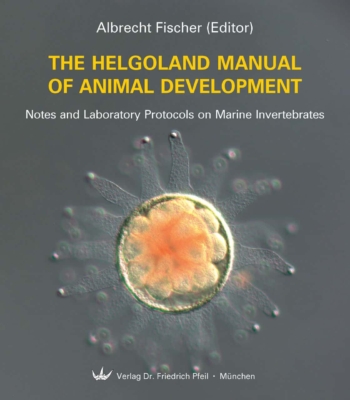
The Helgoland Manual of Animal Development
38,00 €zzgl. Versandkosten / Versandkostenfrei in D
-
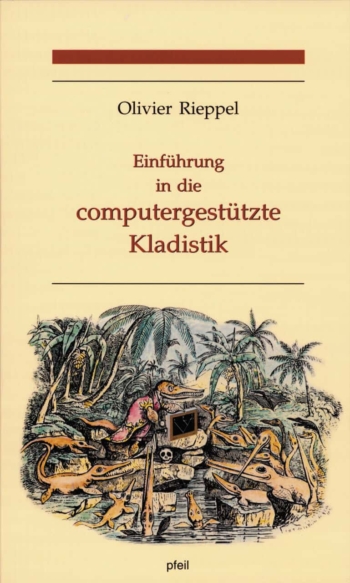
Einführung in die computergestützte Kladistik
13,00 €zzgl. Versandkosten / Versandkostenfrei in D
-
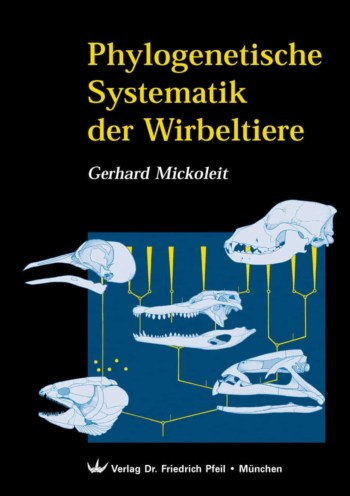
Phylogenetische Systematik der Wirbeltiere
98,00 €zzgl. Versandkosten / Versandkostenfrei in D
-
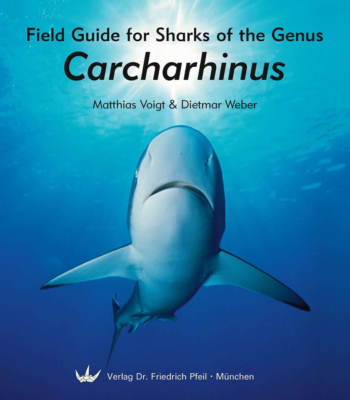
Field Guide for Sharks of the Genus Carcharhinus
38,00 €zzgl. Versandkosten / Versandkostenfrei in D
Wir sind gerne für Sie da
Verlag Dr. Friedrich Pfeil
Hauptstraße 12B
5232 Bergkirchen OT Günding – Germany
Tel.: +49 8131 61 46 590
Fax: +49 8131 61 46 591
E-Mail: info@pfeil-verlag.de
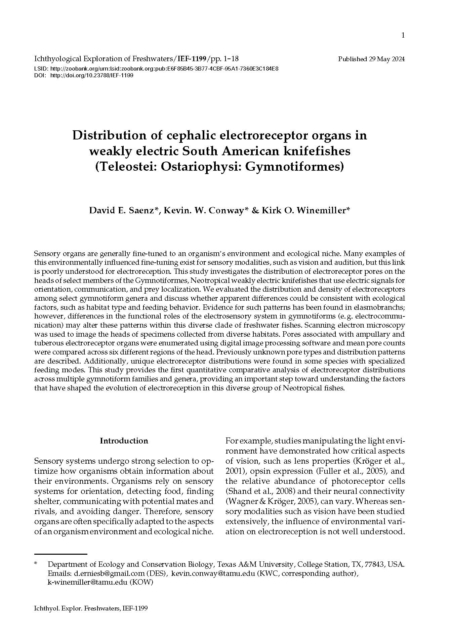
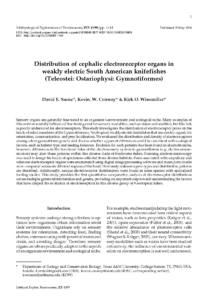
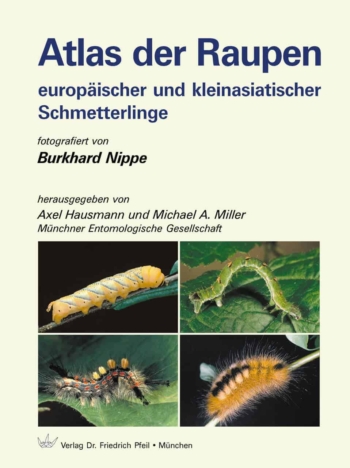
Rezensionen
Es gibt noch keine Rezensionen.